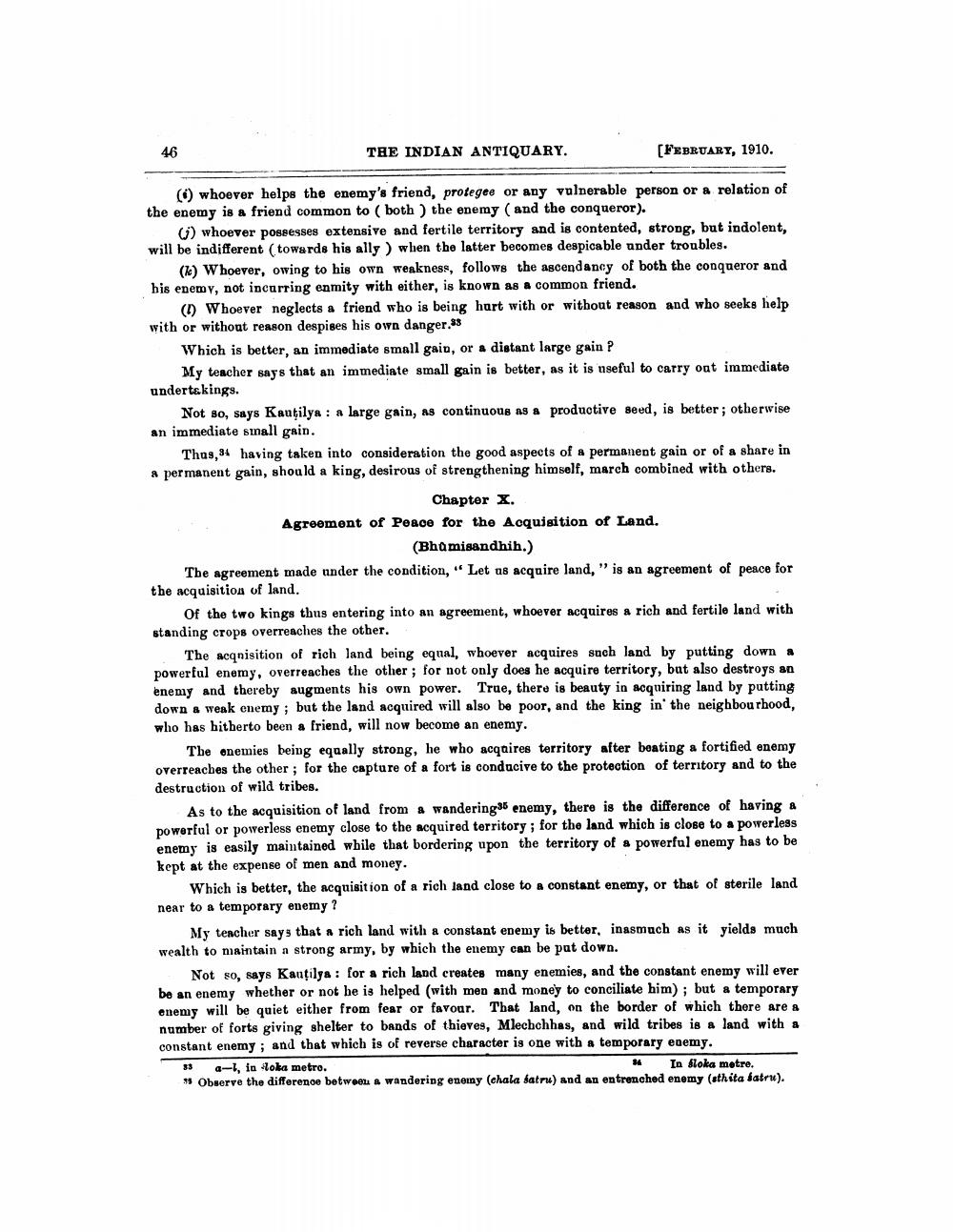________________
46
THE INDIAN ANTIQUARY.
[FEBRUARY, 1910.
() whoever helps the enemy's friend, protegee or any vulnerable person or a relation of the enemy is a friend common to (both) the enemy (and the conqueror).
() whoever possesses extensive and fertile territory and is contented, strong, but indolent, will be indifferent (towards his ally) when the latter becomes despicable under troubles.
(k) Whoever, owing to his own weakness, follows the ascendancy of both the conqueror and his enemy, not incurring enmity with either, is known as a common friend.
(1) Whoever neglects a friend who is being hurt with or without reason and who seeks help with or without reason despises his own danger.33
Which is better, an immediate small gain, or a distant large gain?
My teacher says that an immediate small gain is better, as it is useful to carry out immediate undertakings.
Not so, says Kautilya: a large gain, as continuous as a productive seed, is better; otherwise an immediate small gain.
Thus, 34 having taken into consideration the good aspects of a permanent gain or of a share in a permanent gain, should a king, desirous of strengthening himself, march combined with others.
Chapter X.
Agreement of Peace for the Acquisition of Land.
(Bhumisandhih.)
The agreement made under the condition, "Let us acquire land," is an agreement of peace for the acquisition of land.
Of the two kings thus entering into an agreement, whoever acquires a rich and fertile land with standing crops overreaches the other.
The acquisition of rich land being equal, whoever acquires such land by putting down a powerful enemy, overreaches the other; for not only does he acquire territory, but also destroys an enemy and thereby augments his own power. True, there is beauty in acquiring land by putting down a weak enemy; but the land acquired will also be poor, and the king in the neighbourhood, who has hitherto been a friend, will now become an enemy.
The enemies being equally strong, he who acquires territory after beating a fortified enemy overreaches the other; for the capture of a fort is conducive to the protection of territory and to the destruction of wild tribes.
As to the acquisition of land from a wandering 35 enemy, there is the difference of having a powerful or powerless enemy close to the acquired territory; for the land which is close to a powerless enemy is easily maintained while that bordering upon the territory of a powerful enemy has to be kept at the expense of men and money.
Which is better, the acquisition of a rich land close to a constant enemy, or that of sterile land near to a temporary enemy?
My teacher says that a rich land with a constant enemy is better, inasmuch as it yields much wealth to maintain a strong army, by which the enemy can be put down.
33
Not so, says Kautilya: for a rich land creates many enemies, and the constant enemy will ever be an enemy whether or not he is helped (with men and money to conciliate him); but a temporary enemy will be quiet either from fear or favour. That land, on the border of which there are a number of forts giving shelter to bands of thieves, Mlechchhas, and wild tribes is a land with a constant enemy; and that which is of reverse character is one with a temporary enemy.
a-1, in loka metro.
24 In Sloka metre.
Observe the difference between a wandering enemy (chala satru) and an entrenched enemy (sthita satru).




